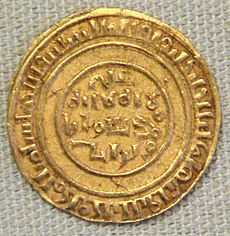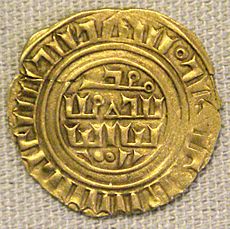County of Tripoli facts for kids
Quick facts for kids
County of Tripoli
|
|||||||||
|---|---|---|---|---|---|---|---|---|---|
| 1102–1289 | |||||||||

|
|||||||||
| Status | Vassal of, in turn, Kingdom of Jerusalem, Principality of Antioch and the Mongol Empire | ||||||||
| Capital | Tortosa (1102–1109), Tripoli (1109–1289) | ||||||||
| Common languages | Latin, Aramaic (Maronite), Old French, Old Occitan, Italian, Arabic, Greek, Sabir | ||||||||
| Religion | Roman Catholic Church (Among nobles) Maronite Church and Eastern Orthodox Church (Among general populace) Oriental Orthodoxy, Islam, and Judaism minority |
||||||||
| Government | Feudal monarchy | ||||||||
| Count of Tripoli | |||||||||
|
• 1102–1105 (first)
|
Raymond I | ||||||||
|
• 1287–1289 (last)
|
Lucia | ||||||||
| Historical era | High Middle Ages | ||||||||
|
• Established
|
1102 | ||||||||
|
• Conquered by Qalawun
|
27 April 1289 | ||||||||
|
|||||||||
| Today part of | Lebanon Syria |
||||||||
The County of Tripoli was one of the Crusader states in the Middle East. It existed from 1102 to 1289. This county was in the area we now call Tripoli in northern Lebanon, and parts of western Syria. People living there included Christians, Druze, and Muslims.
When Crusaders from Europe, mostly from southern France, took control in 1109, Bertrand of Toulouse became the first count. A count was like a ruler of a county. He was a vassal of King Baldwin I of Jerusalem. This meant he promised loyalty and support to the king. The county's rule was not always passed down by family. Sometimes, military strength or negotiations decided who would rule. In 1289, the County of Tripoli was taken over by Sultan Qalawun of the Mamluks. It then became part of Mamluk Egypt.
Contents
How Christians Took Control
Raymond IV of Toulouse was a very rich and powerful crusader. After the First Crusade, he still did not have his own land in the Near East. Other Crusader states like the County of Edessa, the Kingdom of Jerusalem, and the Principality of Antioch were already set up.
Tripoli was an important place to control. It connected the French crusaders in the south with the Normans in the north. The area was also good for farming and had many people. In 1102, Raymond IV took over Tortosa (now Tartus). In 1103, he planned to capture Tripoli with other crusaders.
Raymond's Castle
Raymond IV, also called Raymond de Saint-Gilles, started building a large castle. It was on a natural ridge about 3 kilometers from Tripoli. He called it "Mons Peregrinus," which means "Mount Pilgrim." In Arabic, it was known as Qal'at Sanjil.
Even with this new castle and experienced soldiers, Raymond IV could not capture the port of Tripoli. He died on February 25, 1105.
Who Ruled Next?
Count William of Cerdagne, Raymond IV's cousin, was supported by Tancred, Prince of Galilee. But Raymond IV's son, Bertrand of Toulouse, also wanted to lead the campaign for Tripoli. Bertrand was supported by Baldwin I of Jerusalem. He arrived in the Near East with a large army and a fleet from Genoa.
To solve this problem, Baldwin I made a special agreement. William would rule northern Tripoli and be loyal to Tancred. Bertrand would rule southern Tripoli and be loyal to Baldwin. With a united Christian attack, Tripoli finally fell on July 12, 1109. This completed the Kingdom of Jerusalem. When William died, Bertrand became the first official Count of Tripoli.
How the County Was Organized
The size of the County of Tripoli was decided by old borders and battle victories. It also depended on what other Crusader states needed. At its largest, the county controlled the coast from Maraclea in the north to Beirut in the south. Inland, it reached the Krac des Chevaliers fortress. The rich farming land inland was called La Bocquée.
The county was split into 'lordships'. These were areas usually built around coastal ports. The Count of Tripoli controlled the main port of Tripoli and its surrounding lands. He also controlled the area of Montferrand to the east. About a quarter of the land around Tripoli was given to the Genoese. This was payment for their help in battles. The Genoese admiral Guglielmo Embriaco was given the city of Byblos.
Loyalty to the King
Even though Baldwin I helped create the County of Tripoli, he did not directly control it. However, the County of Tripoli had to show fealty (loyalty) and homage (public promises of loyalty) to him. In return, the king would help the county when it was in trouble.
Defense of the County
Tripoli was on a narrow coastal plain. But the mountains behind it were a natural defense line. Several castles were built to protect the mountain passes. Muslim forces, from Turkey and Egypt, often attacked the county's borders, especially in the east.
In 1137, Raymond II, the count at the time, lost control of Montferrand. The Muslim forces became stronger. This happened when the Hashshashin (a group of Nizari Ismailis) formed in the Nosairi mountains to the north.
To make the county's defenses stronger, Raymond II gave land to the Knights Hospitaller in 1144. This land was along the Buqai'ah plain and included castles like Krak des Chevaliers. In the 1150s, the Knights Templar also helped defend the area from Tartus on the coast.
Religion in the County
The counties of the Kingdom of Jerusalem were expected to follow the Latin Patriarch of Jerusalem in religious matters. However, one Count of Tripoli, Pons of Tripoli, made an alliance with Antioch. He followed the Latin Patriarch of Antioch instead, even though the Pope said not to.
Wars with the Seljuk Empire
The County of Tripoli, as a vassal of the Kingdom of Jerusalem, was involved in wars with the Seljuk Turks.
- Shaizar
In 1111, a Turkish leader named Mawdud ibn Altuntash attacked Antioch and Edessa. Bertrand of Tripoli and Baldwin I marched north to defend the Christians. They joined Tancred and the Count of Edessa at the Battle of Shaizar. Their defense of the kingdom was successful.
- Hab
In 1119, the Seljuk Empire attacked Antioch again. They won the Battle of Ager Sanguinis. However, Count Pons of Tripoli and Baldwin II defended Antioch. At the Battle of Hab, they successfully protected the Christian forces.
- Azaz
In 1125, Count Pons of Tripoli fought against the Turks. The Turks had attacked Edessa again, surrounding the town of Azaz. Pons of Tripoli, Baldwin II, and the Count of Edessa tricked the Turks. They lured them out of Azaz into an ambush on the plains, where the Turkish forces were defeated.
The Earthquake of 1170
On June 29, 1170, a big earthquake hit the region. Important defensive forts like Krac des Chevaliers, Chastel Blanc, and al-'Ariymah were damaged. The main cathedral in Tripoli was also destroyed. This earthquake led to a short break in fighting between Nur al-Din and the county.
People Who Wanted to Rule
Bertrand of Toulouse, Son of Alphonso-Jordan
Alfonso-Jordan (1103–1148) was the son of Raymond IV. He was born in Tripoli but grew up in France. In 1147, he joined the Second Crusade. This crusade was started because the County of Edessa had been lost to Turkish forces. Alfonso died in Caesarea in 1148, possibly from poison.
He had a son, Bertrand of Toulouse, who continued towards Tripoli. Count Raymond II (1115–1152), who was the grandson of the first Bertrand, fought against his cousin Bertrand. Raymond II got help from his enemies, Nur al-Din and Unur of Damascus. The Turkish forces attacked the castle of Arima. They captured Bertrand of Toulouse, who was held in Muslim prisons for ten years. He was released in 1159. Raymond II later got Arima back. In 1152, Raymond II was killed by the Assassins.
Guy II Embriaco
Bohemond VII of Tripoli (1261–1287) was the Count of Tripoli and Prince of Antioch. From 1275 to 1277, Bartholomew, Bishop of Tortosa, ruled for Bohemond VII. Paul of Segni, the Bishop of Tripoli, did not agree with Bohemond VII becoming count. This started a war between Bohemond VII and the Templars.
Guy II Embriaco of Giblet (1277–1282) used to be a vassal of Bohemond VII. They became enemies, partly because of a trade war between Genoa and Venice. The Templars tried to remove Bohemond VII from power by supporting Guy II Embriaco. Bohemond VII reacted by attacking the Templar house in Tripoli. This led to more fighting. In 1282, Guy II Embriaco and the Templars were attacked in Tripoli. Guy and his family were imprisoned and left to starve. His followers were blinded, and the Templars were executed.
Benedetto I Zaccaria
After Bohemond VII died in 1287, there was no clear ruler. The leaders of the County of Tripoli offered control to Benedetto I Zaccaria (1235–1307). He was a powerful merchant from Genoa. In Tripoli, people from big trading cities in Europe, especially Italy, had special rights. The local leaders chose Bartholomew Embriaco as the Mayor of Tripoli. He also encouraged trade with the Genoese.
Bohemond VII had no children. His mother, Sibylla of Armenia, was not considered for the throne. This was because she was friends with Bishop Bartholomew of Tortosa, who was seen as an enemy of Tripoli. Bohemond VII's younger sister, Lucie, settled at Fort Nephin with help from the Knights Hospitaller. Eventually, the local leaders decided they could not rule alone, and Benedetto I Zaccario refused to be count. So, after talks, Lucie became Lucia, Countess of Tripoli in 1288.
The Fall to the Muslims
The County of Tripoli faced many problems. There was constant fighting among its own people, not enough money, bad harvests, and changes in trade routes. Also, Muslim and Mongol armies put a lot of pressure on them. All these things led to the decline of the Kingdom of Jerusalem. By the 1280s, only two Crusader states were left: parts of Jerusalem and the County of Tripoli.
Even though the Mamluk government of Egypt had a peace agreement with the county, Tripoli decided to ally with the Mongols in March 1289. Because of this, Sultan Qalawun of Egypt attacked Tripoli. Despite brave efforts to defend it, the county fell and became part of Qalawun's empire.
Counts of Tripoli
- Raymond IV of Toulouse (1102–1105)
- Alfonso-Jordan (1105–1109)
- William-Jordan, as regent (1105–1109)
- Bertrand of Toulouse (1109–1112)
- Pons of Tripoli (1112–1137)
- Raymond II of Tripoli (1137–1152)
- Raymond III of Tripoli (1152–1187)
- Raymond IV of Tripoli (1187–1189)
- Bohemond IV of Antioch-Tripoli (1189 – 1233)
- Bohemond V of Antioch-Tripoli (1233 – 1252)
- Bohemond VI of Antioch-Tripoli (1252 – 1275)
- Bohemond VII of Antioch-Tripoli (1275–1287)
- Lucia of Tripoli (1287–1289)
Tripoli was lost to Egyptian forces:
- Lucia of Tripoli (1289 – c.1299)
- Philippe II de Toucy (c.1299 – 1300)
Tripoli then passed to the Kings of Cyprus and Jerusalem:
- Peter I of Cyprus (1345–1359)
- Peter II of Cyprus (1359–1369)
- James of Lusignan (? – c. 1396)
- John of Lusignan (c. 1396 – c. 1430)
- Peter of Lusignan (c. 1430 – 1451)
- Juan Tafures (1469–1473)
Images for kids
See also
 In Spanish: Condado de Trípoli para niños
In Spanish: Condado de Trípoli para niños








